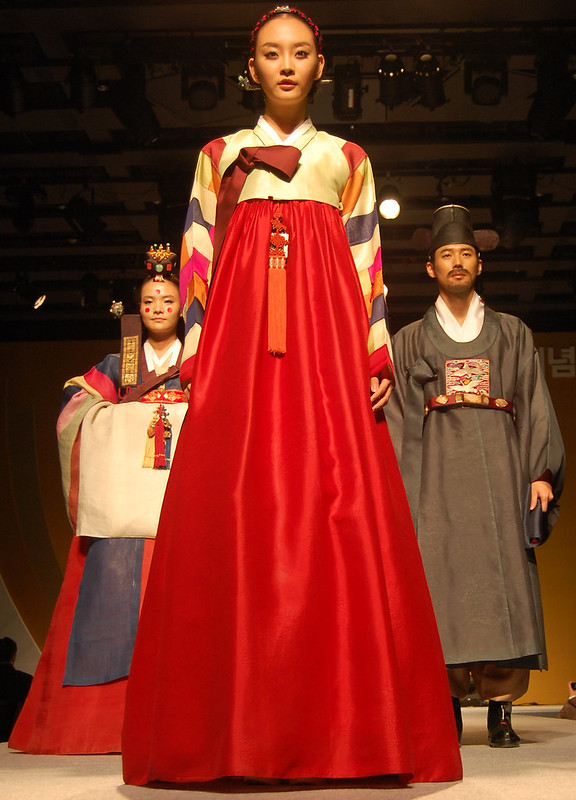
Culture refers to aspects of human-made elements, including tools, dress, and media, in addition to values, attitudes, and norms. Dress is a significant part of almost every culture.
As more cultures have cross-cultural contact, people from begin to change aspects of their cultures by incorporating aspects of different cultures they come into contact with. This includes changes in dress. This process of cultural change is often referred to as cultural authentication. It should be noted though, that there is a long history of forced assimilation, especially for Native or Indigenous communities in North America (Little, 2018). That is, Native communities were forced to assimilate into European culture; Native people were not interested in incorporating European cultural elements.
All people have culture. Culture is not something held only by society elites, such as only the wealthiest, most educated, or most sophisticated.

Culture is a system of learned behavior patterns that are characteristic of the members of a society (Hoebel, 1958). Note the emphasis on the learning of behaviors or ways of doing things. Culture is learned, and individuals learn culture through an ongoing process of socialization. Parents, families, schools, peers, and workplaces, for example, all socialize individuals to ways of doing things. We find differences across cultures in dress, language, food preferences, and other behaviors in part because these are learned behaviors—not knowledge that is innate, instinctual, or determined by genetic programming.
Cultural patterns are characteristic behaviors and often include a complex array of choices. A culture may afford more than one way of doing the same thing. Hence, diversity in behaviors may be found in some aspects of any culture
Culture is a complex whole that includes knowledge, belief, art, morals, law, customs, and any other capabilities and habits that members of a society acquire (Linton, 1936). Linton emphasized that culture is a complex whole—a network of behaviors related to all aspects of life. Dress is shaped by and reflects many characteristics in any culture, so dress is a complex map of cultural characteristics.
Culture includes both abstract and concrete components (Scupin, 1998).
Abstract components include the meanings of symbols, events, activities, or actions and how the meanings are created and selected. Concrete components include the forms of action, behavior, event, activity, or artifact. Dress may be a concrete object, such as a shirt, a pair of shoes, or a hairstyle, but those artifacts develop meanings in a culture. The fashion process, situations in which we use dress, and groups associated with wearing of types of dress all bring meaning to those artifacts.
Culture is mentifacts, what people know; sociofacts, what people do; and artifacts, what people make (Spradley, 1972):
Culture shapes how people think about things. Mentifacts are the ideas, values, and knowledge that shape how we see a culture and how we know or recognize patterns. This includes stereotypes that are held about groups of people who look certain ways. Note that “how we know” also refers to educational and media systems. Fashion magazines are part of these media systems; so are television and the Internet.

How people in a culture think and what they value are often reflected in dress. For example, in the United States, where we value the freedom to consume and material plenty, consumers tend to prefer large wardrobes (Sproles & Burns, 1994). In some European countries, the average consumer has a comparatively small wardrobe that often includes several high-quality, expensive items. These few items are worn over and over during the season in which they are fashionable.
Sociofacts reflect how people behave in groups and social interactions. For example, police officers wear uniforms to indicate their occupations and rank within the police force. A store like Target has a dress code—red shirts and khaki pants—to help customers identify employees. Many individuals dress up or “clean up” when going to dinner at someone’s house; this small act shows respect to the hosts and indicates participation in a social event.
Sometimes patterns of dress in the larger society reflect how people organize themselves. In the United States today, socioeconomic status is usually only vaguely communicated in our clothing. One hundred years ago, the social class of everyone passing us on the street would have been made clear by their dress.

Dress such as clothing, makeup, tattoos, and shoes are artifacts made by people. Artifacts reflect multiple aspects of a culture, such as mentifacts, sociofacts, and the technological knowledge of a culture that shapes manufacturing processes and materials used. For example, Gore-Tex fabric, now used in high-performance sportswear, was invented through the NASA space program.
Technological advancements and economic reality may exclude some clothing options. In ready-to-wear clothing that most people in the United States buy today, only simple seams, darts, and a few gathers comprise construction. Knits and pandex rather than intricate construction details accomplish, a tight fit. During the 1940s and earlier, however, ordinary clothing often had many tucks, darts, godets, and complex seams, for example. The handwork and sewing skill required for those designs is too expensive to produce today in assembly-line factories. Complex fit through construction also requires customized fitting that is too expensive, time-consuming, and difficult for most of us. We save that expense for business suits and special-occasion garments such as wedding dresses.
Anthropologists disagree on how to distinguish the terms culture and society. We will use the terms fairly interchangeably. One definition of society is “a group of people living and working together in a systematic way” (Mead, 1934). An important implication of this definition is that society requires people to coordinate their actions with each other. Each individual cannot haphazardly do their own thing with no concern for others. With no traffic laws, for example, we would run into each other fairly frequently. Indeed, with no coordination of human effort, automobiles and roads would never have been invented. Dress would have no meaning; fashions and traditions in dress would not exist. We would have no idea who anyone might be on first meeting of them. Dress is a product of systematic human interaction, and it helps us to coordinate our interactions with others.
Ruth Benedict (1959) drew an “arc of human potential” to indicate that every culture makes choices from among a wide array of possibilities for any form of behavior. Each culture, then, chooses different language sounds, foods, dress materials and designs, and other behaviors.
In any culture, the following factors shape choices for dress and other behaviors:
This short film features the Korowai tribe, whose members had no contact with anyone outside of their community until the 1970s. This isolation affected their dress in numerous ways.
To access a transcript for the video above, download this file: The Tree House People Korowai Video Transcript [DOC]
Taking a cultural perspective on dress throughout the semester requires that we adopt specific some ways of thinking about people and the world:
The meaning of dress can be understood only through the study of all aspects of a culture. Dress does not mean one single thing at a time. Many meanings and aspects of a culture are embedded in any example of dress. And sometimes these meanings are difficult to read. For example, why is it that in the United States, where we value individuality so much, so many students on college campuses wear jeans and T-shirts to classes?
Seek to understand dress as it has meaning to a society “insider.” What dress worn in nations outside your home country means to you, a visitor or tourist, is not necessarily related to what it means to people in that culture. We need to examine the characteristics of a culture and talk to people within that culture to find out what their dress means. Something as simple as color may have very different meanings in dress in different cultures. For example, red is a common funeral color in Zambia, Africa, and a wedding dress color in traditional China. What would it mean if someone wore a bright red dress to a close relative’s funeral or a bride wore a bright red dress to her wedding in the United States today?
Ethnocentrism is judgment of people of other cultures by one’s own cultural standards and beliefs. Dress that is different from our own can be challenging to accept or appreciate.
Ethnocentricity is hard to avoid, for example, when members of other cultures or some groups within our own culture do things to the body that are harmful to the individuals. Acting to end these practices may be seen as important for humanity. It is equally important to recognize, however, that these practices may have deep meanings and roots in religious values or beauty standards previously considered good or “healthful.” Simply marching in and making such practices illegal will not necessarily end them. We must take great care when we attempt to change deeply held beliefs about these practices. Change is likely to be slow.
Sometimes it can be quite difficult to avoid ethnocentrism. Here are some examples that individuals may or may not view as harmful:

The video highlights how these women embrace their BDSM identity when others sometimes view these practices as harmful.